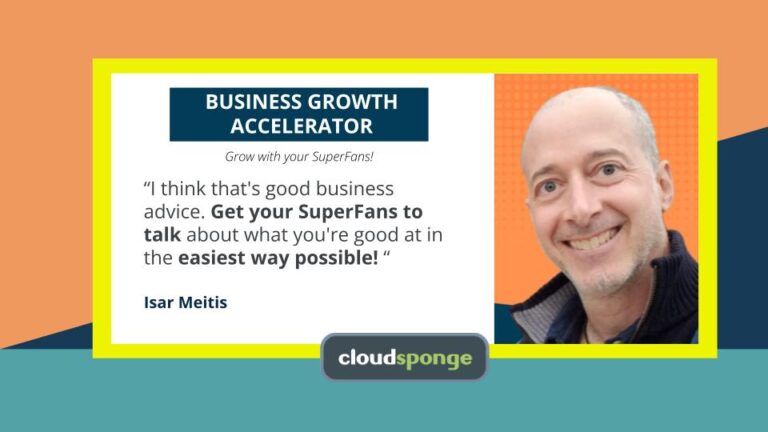Are you the founder of a company that’s spending too much money trying to ship your first product? Do you work for a startup that looks like it might go out of business? Did you invest in a founder that might not be able to get his company to escape velocity?
At CloudSponge, we answered “yes” to all those questions back in 2009.
Keep reading if you’d like to learn how we turned a dire situation into a second chance.
The Backstory: We Screwed Up
That’s really the bottom line. It’s a bit embarrassing, but it’s worth sharing because maybe you’re screwing up too and you can learn from our mistakes.
The B2C SaaS product we started building has almost nothing in common with what CloudSponge is today. More on that later, but for now let’s get into a few bloopers.
-
We didn’t validate our concept before building a minimum viable product.
Since it’s 2014 and Eric Ries and Steve Blank have famously changed the process that our industry uses for starting businesses, I’m not going to bother spelling out the benefits of the lean startup movement, customer development, finding product-market fit and the business model canvas. If any of those buzz words are foreign to you, stop what you’re doing (after you finish reading and sharing this blog post) and start googling. We just started hacking away without getting outside the building and trying to sell the thing first. Boo.
-
We didn’t have distribution channels figured out before starting construction.
Knowing how you intend to make potential customers aware of your existence is just as important as whatever idea you’re pursuing. We thought we had a great product concept but we didn’t have a clue where our first paying customers were going to come from. Fail.
-
We didn’t raise enough money from our investors.
Before you start talking to investors you better know with a high degree of certainty how much money you need to spend to get your MVP built. We didn’t. Being developer-types, we were pretty arrogant about what it would take to ship our MVP and we completely blew it.
After about a year, we had spent most of our seed money and had only built a fraction of what we set out to build. Epic fail by all parties, especially me.
Lesson learned: Sell your product before you build it. It sounds crazy until you try it.
Ok enough about the mistakes, this is depressing. Let’s get into the good stuff.
Desperate Times Call For Desperate Measures
We had spent about a year building features. At this point it’s just a bunch of fuzzy memories, I don’t even want to waste your time by going into more detail than that.
I think everyone involved knew that we didn’t have enough money to take it across the finish line. I’m a pretty transparent guy, especially with people who work for me, so everyone on the team knew our cash position and burn rate every month. In other words, everyone (quietly) knew we were doomed.
Thanks to our open books and strong friendships, we started to have some real conversations about what we were going to do next. Our options ended up being pretty obvious:
-
Give up.
No way! I didn’t entertain this idea for a minute and didn’t even bring it up in our daily scrums even once.
-
Raise more money.
Maybe. But at this point we had been enlightened by the customer development manifesto and we knew that we had homework to do before could succeed at such a tense negotiation with our investors. It was an option, but we came up with a better idea.
-
Scramble.
We had just spent a bunch of time building a few features that our product needed and along the way we had noticed that dozens (maybe hundreds) of developers were out there trying to solve one of the same problems as us. Bingo.
So yeah. Contact importing was just a feature our product needed. It wasn’t the endgame.
In case you’re wondering, yes we did a build vs buy analysis. There were a few players out there like Plaxo, Octazen and Open Inviter, but they were less than perfect in one way or another. We wanted perfect. We couldn’t use those products because they just weren’t good enough for us and obviously we weren’t the only ones who felt that way.
Constructing a great address book importer was a really tough challenge. Lots of developers were asking for help on developer forums and sites like StackOverflow. We figured we could probably sell our solution to some of these people since we had built something awesome and we could swoop in to help them in their time of need.
In other words, what we had built as a byproduct of our original idea was awesome. Way better than everything else on the market with distribution channels that were obvious. Nice.
Lesson learned: Keeps your eyes peeled for byproducts that can sell. Those 37signals guys know what they’re talking about.
Next step? Swallow pride and talk to investors.
Marcellus Wallace Was Right

If you’ve ever had to do it, you know that it’s really hard to tell your investors that you spent all of their money and didn’t deliver what you had promised.
There was no way I’d go into that meeting without Plan B.
So before we met with them we spent our last few dollars putting up a quick and dirty website and reached out to a bunch of developers to see if they’d like to make their pain go away with a few bucks.
They did. Enthusiastically.
The meeting with our investors was awkward.
Actually, it sucked.
I had to tell them that we were not going to be able to build the business that they had invested in without a huge infusion of capital and another leap of faith. At this point I had learned a lot about starting a business and I knew that we hadn’t raised nearly enough money to get the original concept off the ground.
But I had the contact importer in my back pocket.
We met for a long time about it, a few hours at least. Because we had been neck-deep in the contact importer for a long time and we had pre-sold it to a bunch of people, I knew my stuff inside-out.
I was able to persuade the same investors from our seed round to follow up with another cash infusion to give us a shot at cornering the contact importing market. Score.
Lesson learned: Don’t let pride get in the way of keeping your momentum. Sometimes you just have to let it go and change course.
Next step? JFDI.
Is It Still OK To Use The Word “Pivot”?
Phew. We had a bit more money in the bank, a product that had a few paying customers and a distribution channel that was working.
No lessons to learn now, time to crush it. Be frugal, make the product as awesome as it can be and drive as many customers as possible from that channel.
Meanwhile, ratchet up revenue and find more distribution channels, obviously.
I’ll save the rest of our journey for future blog posts, but since I’m relatively new at blogging I’ll summarize the main points I’m trying to make here in case they’re not obvious.
- Screwing up sucks but it happens to most of us. Keep reading and evolving.
- Your first idea failed, but you might have already built something that won’t. Look for groups of people who are struggling with the same problems you had.
- Pride and ego are your enemy when you’re facing failure.1 Improve your situation by keeping an open mind.
If you can relate to our story and you want some input on your situation, drop a comment below and let’s talk it out.



